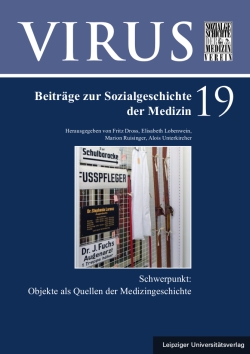
VIRUS Band 19, pp. 229-238, 2021/06/10
Schwerpunkt: Objekte als Quellen der Medizingeschichte

To take medical objects as historical sources seriously, means to turn one’s full attention directlytowards these things repeatedly. Against the background of richly available thing theories andmethodological concepts, each historical object research benefits from various analyticalstrategies. In medicine and the sciences, developed over time, these are within distinctive limitations:reflective description (observation), autoptic inspection (dissection), repeated testing(experimentation) and virtual reproduction (digitisation). Although things neither live, norgenerate autonomous agency, they pass through distinct phases: development and testing,implementation,use and generation of primary effects, storage, latent transition in the depot,rediscovery and presenting secondary meanings. Things relate to texts in a complex way:through inscribed or add-on texts, objects’ own subtexts become apparent. The things’ contextscan be reconstructed from that point. Various readings of the things thus occur and clarify theirstatus as, for instance, research, teaching, or publically performing things, as power, genderedor representational items, but also as in-between things, which meander between the medicalworlds and disciplines as boundary objects. In all medical things, various actors are inscribed,such as patients, healers or instrument makers. It is their ingrained subjectivity, which turns eachobject into a sensitive one and requires that they are dealt with care and respect in research,teaching and public display. Ultimately, medical things do not talk. If they could, they wouldprobably have a lot to say. Therefore, it is the responsibility of historians of medicine and scienceto make them speak.
Keywords: Medical objects, Medical History, Objects Studies, Material Cultures, Museology